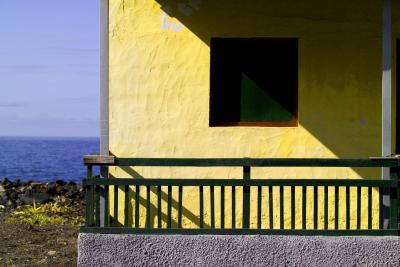The last thing the guys defending the sinking ship Nikon want to look at are the superb images coming from the Sonys, with either FE, Batis or fine legacy lenses - none of which they can actually use - having to solely put up with the crusty, stale range of Nikkors instead (they actually still make a handful of manual focus lenses as a reminder of what they could once do).
No no. Instead of that, the high powered displays are used to scrupulously examine every little tiny thing that might be there if you can just ignore the fabulous images. You know, 0.2 stops of DR IF you shoot at ISO 64.
Photo shock jock Lloyd Chambers was quoted at SAR as saying he could sharpen his Nikon files four times more without them falling apart like the bad Sonys do, he thinks Sony 'cooks'.
read it, that is why he wrote it:
'While I can double or quadruple sharpening on a Nikon D810 file with minimal ill effects, doing so on a Sony A7R or A7R II files looks godawful.'
Jesus wept - all photographers work very hard to get sharpening just right for each file and here - four times! Some bragging right eh? Like turning the amp to 11 like the Spinal Tap muso airhead. Unreal is the world they inhabit - quite literally. It seems to be more religion dogma than balanced analysis - get some perspective guys. Context matters..
Push well aside however: the better high ISO, IBIS, EVF aids, silent shutter, video, we don't need to hear about that kind of flexibility, oh no.
These are pure operational improvements, the things that actually assist real photographers in real world photography, features that broaden the scope of use cases way beyond the natural home of Nikon; and don't mention where they got the sensor, or how little changed the D810 is over the last 2-3 models they pumped out for the faithful to swoon over.
Seriously, if I had the misfortune to have a Nikon system I'd be all over their forum moaning about the lack of functionality of the things, the backward direction of that narrow focus company, the lack of high IQ cutting edge lenses to match Sony/Zeiss, the lack of a decent focusing system beyond AF, the lack of a decent size/weight travel system, the seeming loss of direction, the drowning not waving...the unidimensionality of the cameras.
What is the best they can manage to accompany the pseudo-scientific gobbledygook? Yep, that trademark sneering condescension that accompanies each and every foray into another camera brand's public places. Nice.
But most Sony users are more mature than that, in fact many are reformed old world camera users who saw which way the wind was blowing, and wanted some of the innovation, they saw what the gain in sheer image quality could do for them, for their work.
'Come over to the dark side' whispers the silent, strong, versatile a7rII, lol.
It's good fun, but you do need a sense of humor to watch the spectacle these days.

